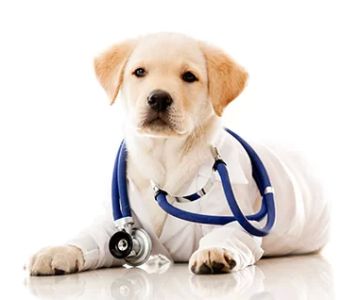How to Reduce Your Pet’s Exposure to Toxins and Ensure a Safe Environment
1- Understanding the Toxins in Your Pet’s Environment
As pet owners, it’s essential to recognize the many toxins that could potentially harm your pet’s health. From household cleaners and pesticides to plants and foods, toxic substances are present in various forms. However, with proper awareness and preventative measures, you can minimize these risks and ensure that your pet stays safe. Let’s explore the different types of toxins and how they can affect your pet’s well-being.
1.1 Common Household Toxins
Every home is filled with products that can be dangerous to your pet if they come into contact with them. Household cleaners such as bleach, ammonia, and other chemical-laden products are toxic to pets, particularly when ingested. Additionally, human foods like chocolate, grapes, onions, and garlic can be highly toxic to dogs and cats. Keeping these substances out of reach and using pet-friendly cleaning products can significantly reduce the risk of accidental poisoning.
1.2 Toxic Plants for Pets
Many common plants can be toxic to pets if consumed. Some of the most hazardous plants include lilies, poinsettias, and ivy. It’s crucial to know which plants are safe and which ones should be avoided, especially if you have a pet that tends to chew on plants. Always ensure that the plants in your home or garden are non-toxic to pets, or place them in areas that your pet cannot access.
2- How to Minimize Your Pet’s Exposure to Toxins
Reducing your pet’s exposure to toxins involves making informed decisions about the environment you create for them. Small changes in your home, cleaning routine, and lifestyle can have a significant impact on your pet’s health and longevity. Let’s look at some key strategies for toxin-free living.
2.1 Choose Pet-Safe Cleaning Products
One of the easiest ways to reduce your pet’s exposure to toxins is by switching to natural, pet-safe cleaning products. Look for eco-friendly brands that use non-toxic ingredients. There are many options available for everything from floor cleaners to air fresheners that are safe for both humans and pets. Avoid using chemical-based air fresheners and candles, as they can irritate your pet’s respiratory system and expose them to harmful toxins.
2.2 Create a Pet-Safe Garden
If you have a garden, be mindful of the plants you choose. Avoid plants that are toxic to pets, and ensure that any fertilizers or pesticides you use are pet-safe. Organic gardening practices are a great way to reduce the likelihood of using harmful chemicals in your yard. If you’re not sure whether a plant is safe for your pet, you can check with your veterinarian or consult a list of common toxic plants.
2.3 Control Food and Treats
One of the most common ways pets are exposed to toxins is through food. Some human foods are toxic to pets, and many commercial pet foods contain questionable ingredients. Opt for high-quality, natural pet food that is free from artificial preservatives, colors, and flavors. Ensure that your pet only eats food and treats made specifically for them, and avoid sharing harmful human foods. If you’re ever in doubt about a food item, always check with your vet before offering it to your pet.
3- Creating a Safe, Toxin-Free Living Space for Your Pet
Creating a safe environment for your pet goes beyond using safe cleaning products and food. The space your pet spends time in should be designed with their health in mind. This includes everything from their bedding to their toys and even the flooring they walk on.
3.1 Choose Pet-Friendly Furniture and Fabrics
When selecting furniture for your home, consider choosing items made from non-toxic materials. Many conventional furniture items are made with synthetic materials that may contain harmful chemicals. Look for pet-friendly furniture that uses organic fabrics and finishes. This is especially important for pet beds, blankets, and other items your pet will be in direct contact with on a daily basis.
3.2 Use Natural Pest Control Methods
Pest control is essential to keeping your home free from insects and rodents, but traditional pest control methods can be harmful to pets. Instead of using chemical pesticides, opt for natural solutions like diatomaceous earth or essential oil-based sprays that are safe for pets. Additionally, regularly cleaning your home and sealing cracks and gaps can help keep pests away without resorting to harmful chemicals.
4- Regular Health Monitoring and Veterinary Visits
Regular vet check-ups are crucial for monitoring your pet’s health and catching any potential issues early. Your veterinarian can offer advice on reducing your pet’s exposure to toxins and provide insights into the best preventative care options. Regular screenings for common illnesses and ensuring that your pet is up to date with vaccinations can also help reduce their risk of exposure to dangerous toxins.
4.1 Routine Check-Ups
Routine check-ups with your vet help identify any health problems that might arise due to toxins or other environmental factors. If you notice any unusual behavior, such as lethargy or vomiting, it’s important to take your pet to the vet immediately for diagnosis and treatment.
4.2 Educate Yourself on Pet Health
As a pet owner, educating yourself about the common toxins that could harm your pet is crucial. Be proactive about researching and staying informed about the risks. There are many resources available from reputable pet organizations and veterinarians to help you understand the potential hazards your pet may face and how to avoid them.
By following these steps and making informed decisions about the environment you provide for your pet, you can significantly reduce their exposure to harmful toxins. Ensuring that your home is safe and toxin-free is one of the most loving things you can do for your furry friend. For more tips on how to create a healthy environment for your pet, visit Fred Miller Lawyer for expert advice on natural pet care.











